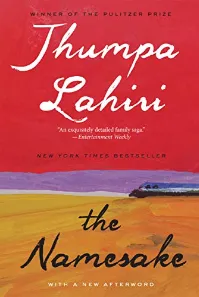
Jhumpa Lahiri’s THE NAMESAKE and Finding Culture in Literature
A couple of years ago, I had the fortune to come across Jhumpa Lahiri’s The Namesake. I read a few of Lahiri’s short stories in high school, and decided to read the acclaimed novel for more of the enjoyment I had experienced from those stories. However, the read turned out to be a lot more pivotal than I had anticipated.
The Namesake begins with a scene of a woman making a South Asian snack called chanachur in Bengali—but sometimes known as Bombay mix—made of puffed rice, minced onions, and dried lentils, all mixed with mustard oil. The moment was a jarring one in my reading experience because it was the first time I read about the food that I ate at home being described in a book. My surprise grew as I read about Gogol’s parents and related to all the everyday things they did. Lahiri writes about South Asian culture without preamble, without explanation, and without apology. At no point does she stop to explain what a word means or make amends for the differences that anyone who was unfamiliar with the culture might notice. As for me, I was in a state of wonder at the fact that I was reading about characters who felt so close to home: characters who looked like me and knew the name of the different spices you’d need to cook a traditional Bengali dish of fish. Along with this joy—the joy at finding something at once exciting and familiar—was a sense of incredulity. I realized, with a vague sense of sadness, that it was the first time I read a book that focused on Indian characters and incorporated aspects of the larger South Asian culture.
While the book itself is a wonderful exploration of identity, love and family, the experience of reading it made me realize the importance of having stories about people like you. In her TED Talk “The danger of a single story,” novelist Chimamanda Ngozi Adichie expands on this when she speaks about how important it was for her to read African literature because it showed her that it was possible for people like her to exist in literature.
Both Lahiri and Adichie helped me understand that it is important to find people like yourself in literature. The reason for that importance, however, lies deeper. On the surface, reading about culturally similar characters feels like validation. In both my case and Adichie’s, reading about people of color, of “girls with skin the color of chocolate,” was an affirmation that people like us existed beyond our immediate circle of friends and family, that we were not alone. However, it goes beyond simply seeing a reflection of culture in fiction. It’s about the stories that go out into the world. Having books featuring characters who have a culture similar to mine, or even a book where the characters are found in a place that I can identify with, says that those places, those people, and those stories matter. It brings in different shades of experience, and that’s important, because western literature, for all that it’s given us, cannot capture a global audience. I am hence grateful for novelists like Lahiri and Adichie who help us come close to doing that. Now, if only I could have some chanachur…
















